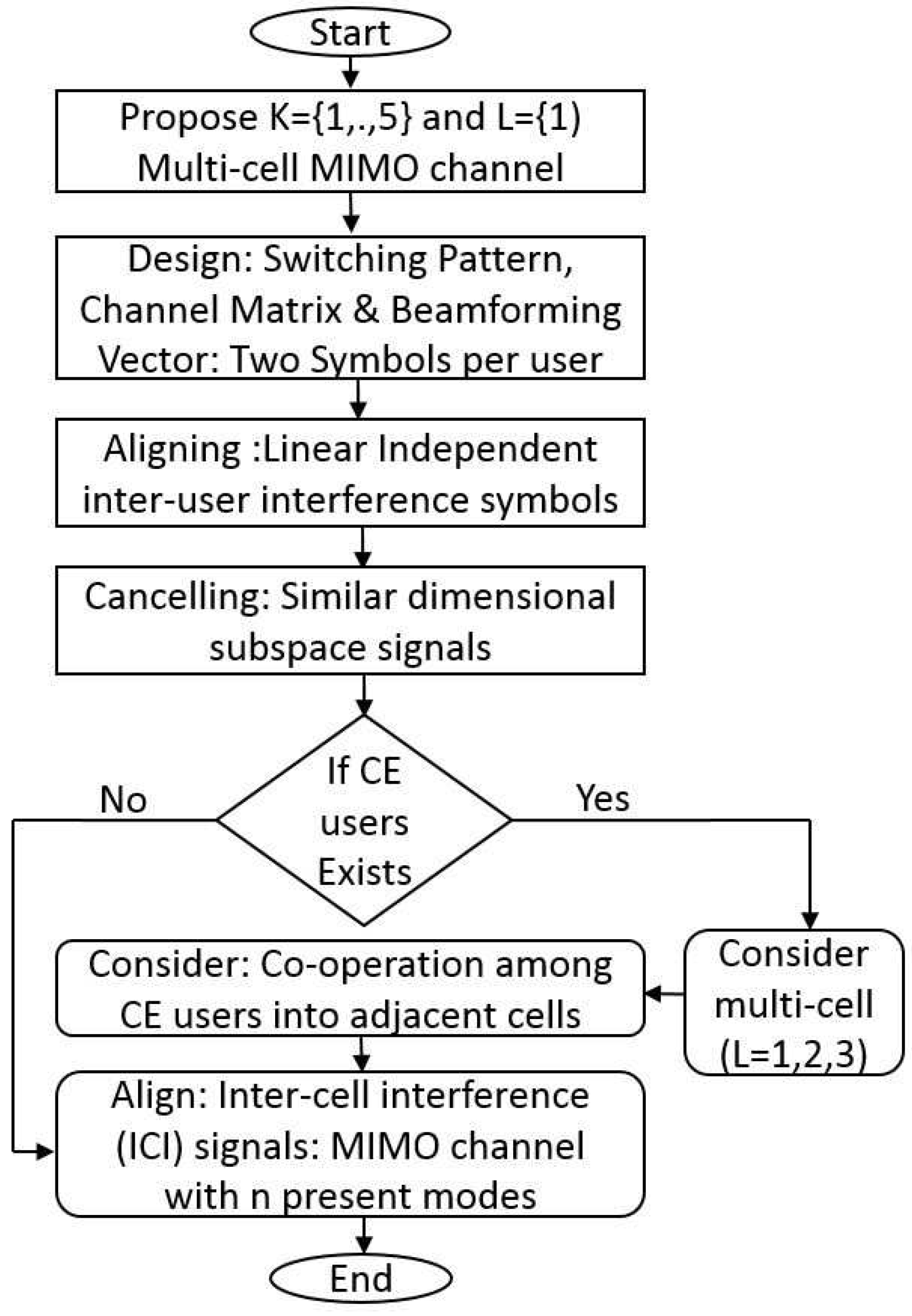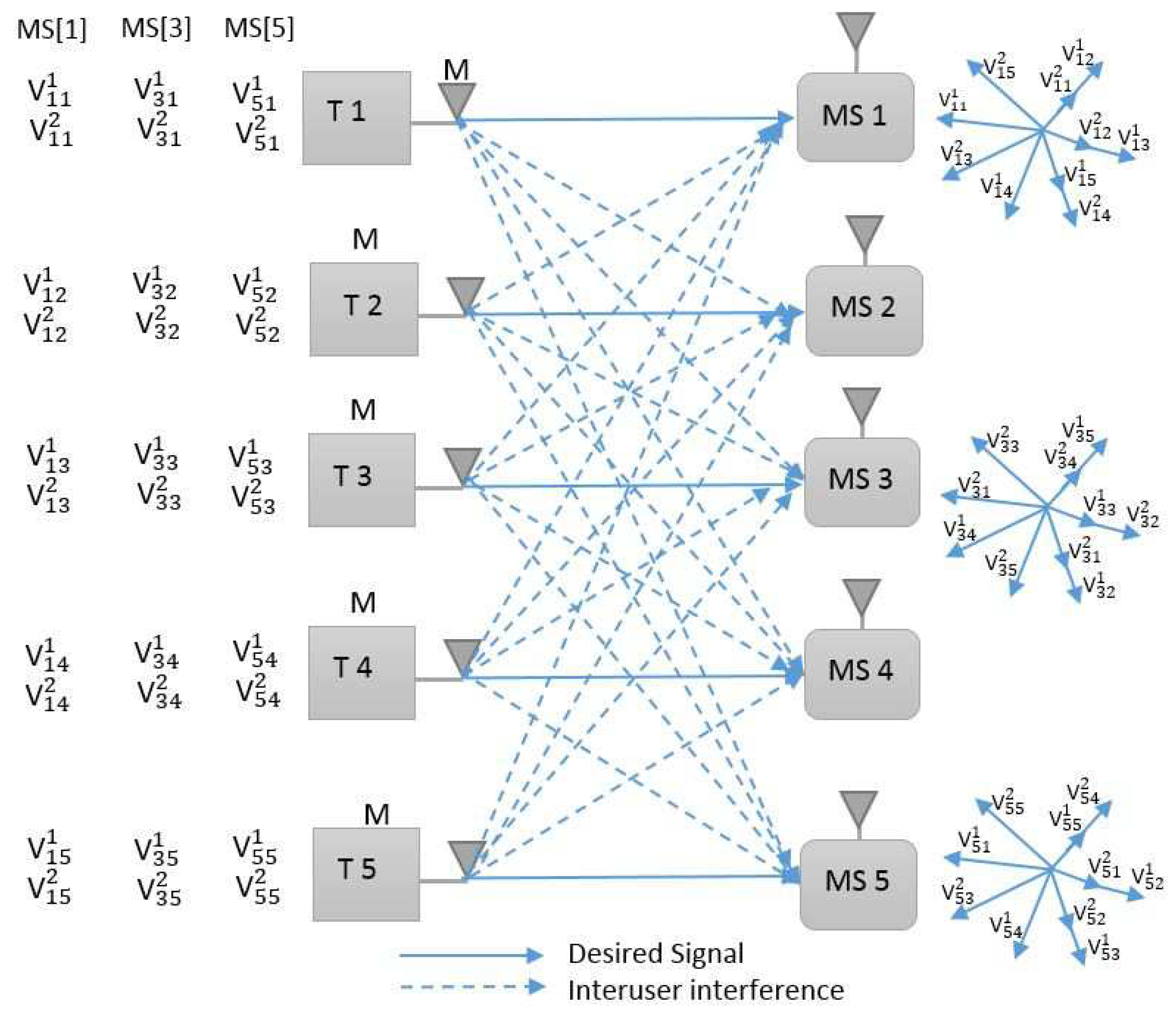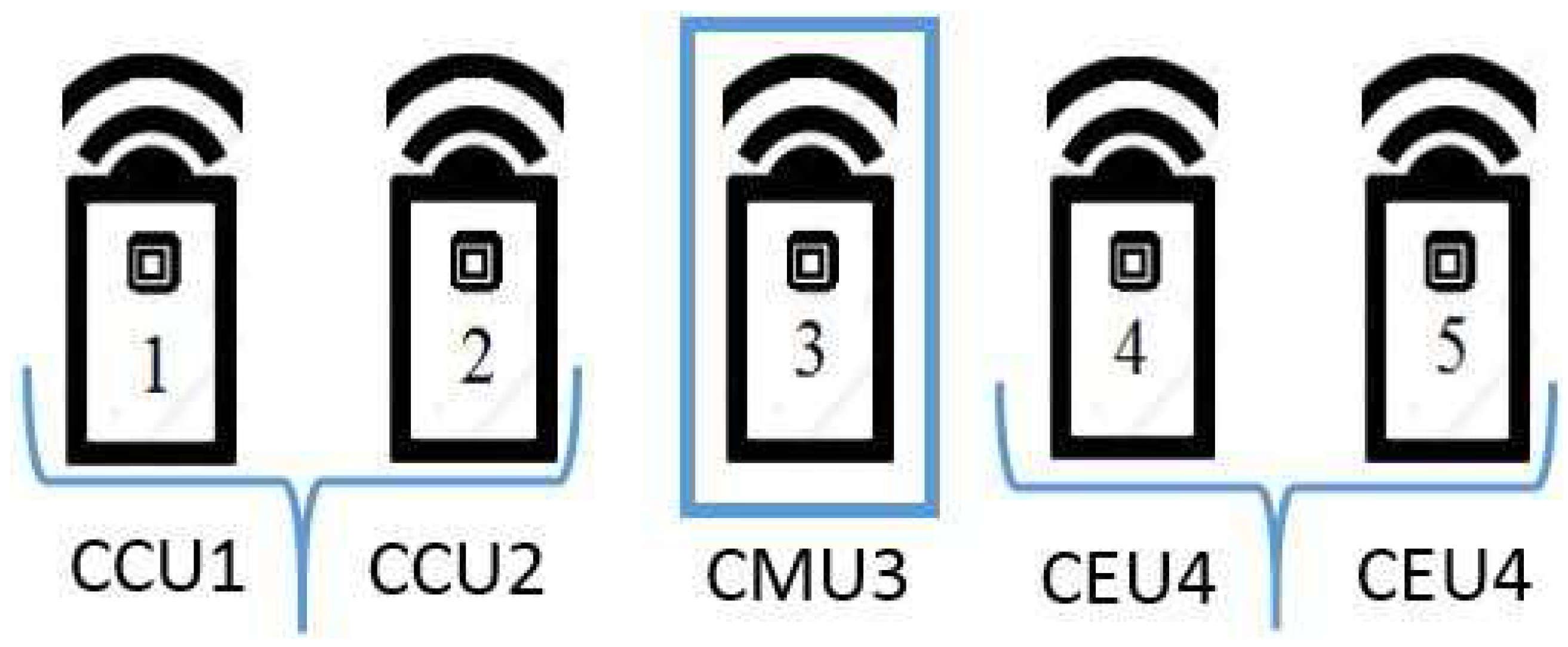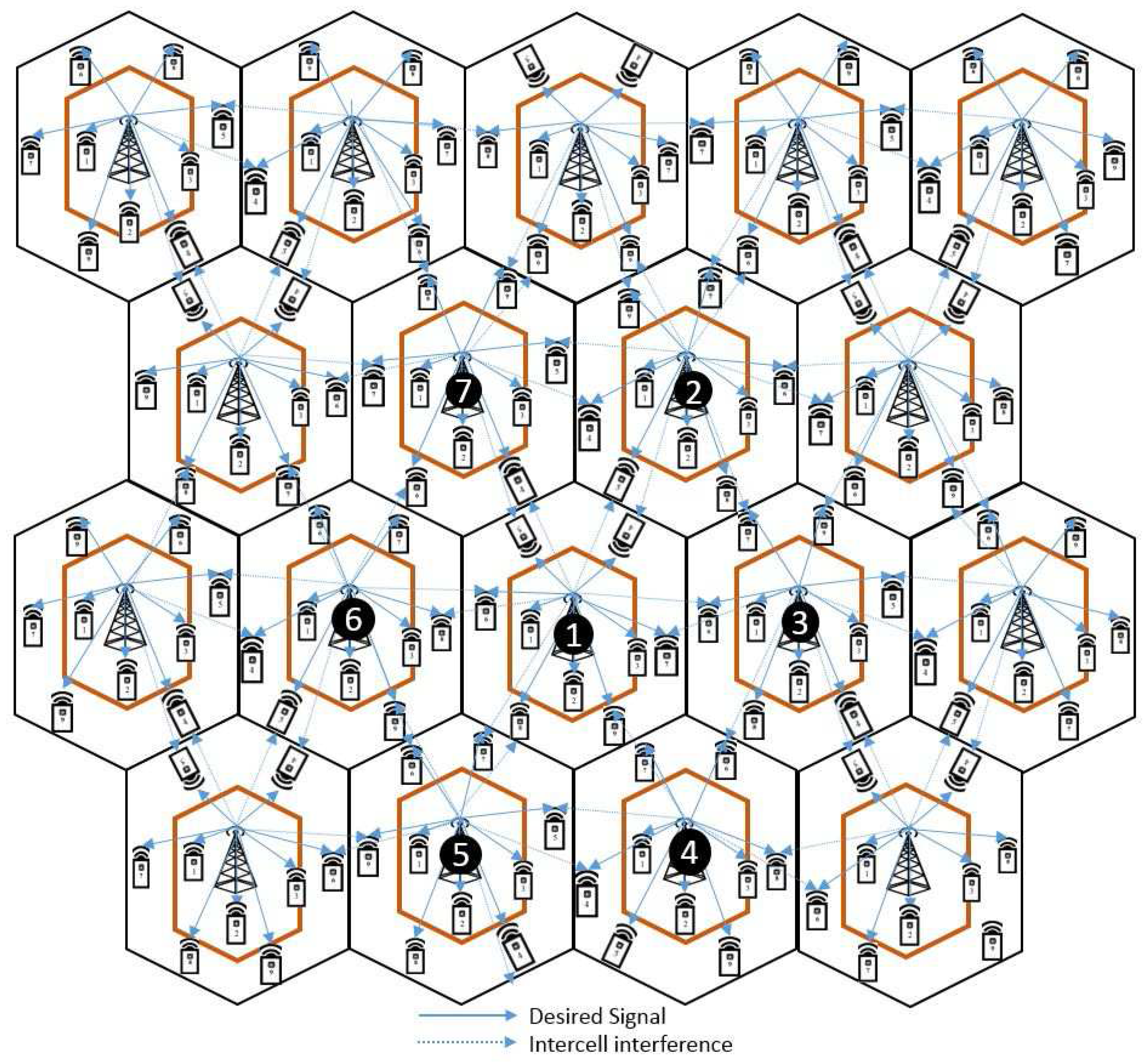Interference alignment (IA) is one of the most prominent techniques in wireless communication systems because of their increase in size of wireless network, complexity and challenges encountered [
1]. The achievable rate and channel capacity region for a two-cell
multiple-input-multiple-output (MIMO) interference channel and
K-user relay aided multiple-input-single-output (MISO) interference channel are characterized with blind-IA and imperfect channel knowledge schemes, respectively [
2,
3]. Topological interference management scheme for MIMO relay channel and two-cell two-hop MIMO half-duplex relay channel schemes require limited channel information to align the interfering signals. IA is the finest approach for time-varying MIMO interference networks, as it requires only limited resources such as time, frequency and number of users [
4,
5]. Some special cases require global channel knowledge, such as perfect and imperfect channel information. The retrospective-IA, blind-IA and linear precoding techniques require channel temporal correlation structure or private information from the transmitter side. To align the interference signals in an efficient manner, private information retrieval retrieves the
K-user channel values at the receiver side by using databases to recognize the desired message index values [
6,
7,
8,
9]. In particular, ergodic IA scheme required past (delayed) channel information (feedback) from the transmitter for effective IA strategies [
10]. Authors in [
11,
12] reported that a dark-blind IA scheme consider staggered antenna switching approach (transmitter equipped with M antennas and K receivers) for vector broadcast channel to solve the interference problems. It was also shown that dark-blind IA through staggered antenna switching method provide better-IA scheme for MISO and single-input-single-output (SISO). interference channels. In [
13,
14], they discussed the joint optimization for multiple-relay MIMO channel and channel auto correlation for MISO broadcast channels, where the achievable degree of freedom (DoF) is determined based on the total number of independent interference-free signal dimensions for multiple-relay systems. The authors in [
15] focus on the energy-efficiency of a load-adaptive Massive MIMO system, by considering user location and distribution on dynamic power allocation strategy. The blind-IA approach established on staggered reconfigurable antenna modes to generate short-term channel fluctuation patterns that are exploited by the transmitter is briefly deliberated in [
16]. The effect of robustness antenna selection for spatial multiplexing and Alamouti space-time interference alignment (STIA) techniques for asynchronous cooperative systems are briefly discussed, respectively in [
17,
18]. In [
19], the antenna switching pattern (reconfigurable antennas) scheme is extensively used to align the desired and interference signals automatically in a downlink broadcast channel. Relay-assisted interference network and the achievable DoF for MIMO Gaussian broadcast channels assists with aligning the interference signals in an efficient manner under non-cooperative transmission strategy [
20,
21].
In this paper, we propose new IA and power allocation schemes for a Gaussian interference channel where each receiver is equipped with reconfigurable antennas (staggered antenna switching pattern) capable of switching between
T preset modes. The authors in [
2] consider two cell MIMO interference channels by focusing two main scenarios (
L = 2,
K = 2) such as (1) mobile user (UE1) located very far (cell edge user) from the base station (BS1) and (2) the mobile user (UE2) located very close to the base station (cell center user). In the existing scheme from [
20], where the matrix dimension
is designed based on
and the matrix premeditated (randomly generated transmission strategy), but the beamforming vector
is evaluated through multiplying the switching vector of individual channel matrix, for example
. Due to the novelty of the proposed scheme, the matrix dimension
is constructed through
, and both switching matrix and beamforming vector are premeditated (randomly generated transmission strategy). Moreover, we extend our approach to joint IA and power allocation strategies, for (
L = 3 cells,
K = 5 users) is characterised in
Section 3 and
Section 5. The alignment scheme is based on mild assumptions on the channel coherence structure, and we consider a low configurable switching antenna to switch between two preset (
T = 2) modes. Since the proposed scheme does not require cooperation at the transmitter, the key idea behind the proposed scheme is to align the interference signals by creating a short-term channel fluctuation pattern at the transmitter side. This new insight behind the proposed scheme is that any vector of a user aligned at one unintended receiver (by cancelling similar dimensional subspaces) cannot be aligned at the other unintended receiver. In addition, we consider a multicell MIMO partial-cooperative network and power allocation strategies to improve cell-edge user performance. We completely characterise the
K-user, multicell MIMO Gaussian interference channel through the staggered antenna switching pattern in the absence of channel state information (CSI). The base stations (BSs) use the channel fluctuation pattern information to adapt their environment and communicate strategies.














